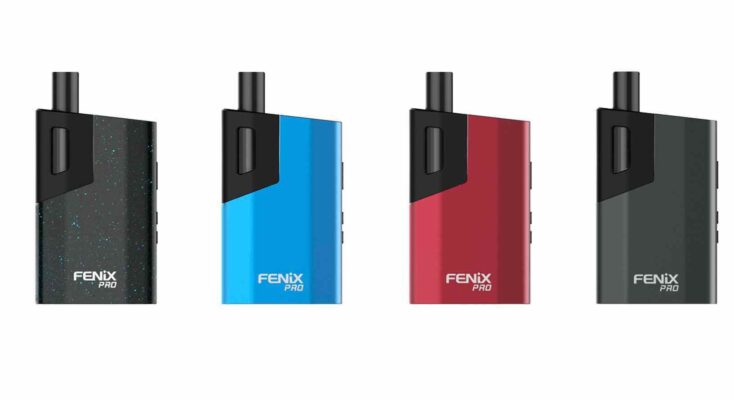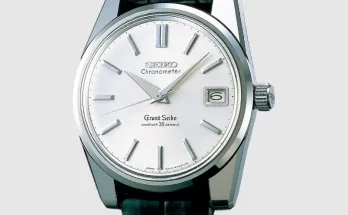Determine the amount of pressure in the vaporizer’s inlet valve before using the vaporizer. if the vaporizer is located near to the sampling valve, this fixed pressure reflects the pressure that is encountered by the process. This is also how the Fenix PRO vaporizer works. With high pressure, it’s possible to maintain an appropriate Fenix pro Vaporizer temperature without having to worry about the incoming liquid boiling.
Set the intake temperature. There are two goals to keep in mind while regulating the thermostat. Prior to using a Fenix pro Vaporizer, ensure that the sample is completely liquid and free of tremors by keeping the temperature as low as possible. The phase diagram shows that at 4 bar, the boiling point of a hexane/pentane mixture is 88 degrees Celsius. We’ll retain the sample in a liquid state at 80 degrees Celsius in order to give ourselves some room for error. This is done with proper OLED Display.
It is now necessary to elevate the temperature to a level that promotes the sample to vaporise. A sample’s temperature drops when Fenix pro is vaporised at the Vaporizer Shop in accordance with the law of conservation of energy. It is important to maintain a temperature high enough so that when the pressure drops, the sample doesn’t go into the boiling point of a liquid. With OLED Display all the monitoring are done there.
The Fenix pro Vaporizer‘s output pressure may be adjusted to suit your needs. At or below the orange dew curve, the pressure must be lowered. In the phase diagram shown, the outlet pressure is set at 1.5 bar. The sample would not totally evaporate and divide if the exit pressure were somewhat larger than the entrance pressure.
Reverse the flow for Fenix pro Herbs. A valve and a rotameter are used to regulate the flow rate rather than the vaporizer itself. High THC vapour flow rates are desirable for sampling systems because they speed up the transfer of samples from sampling systems to analyzers. This may be a concern since the sample vaporisation process requires more heat when flow rate is high. An increase in flow rate results in an increase in temperature drop throughout the evaporation process. Observe that the purple arrow in the sample phase diagram represents a temperature reduction. The purple arrow tilts farther to the left as the weed flow increases. All these are the followers of the True Convection heating technology.
The Fenix vaporizer’s ability to dissipate heat is another aspect that impacts the temperature drop. Some vaporizers are built to maximise heat transfer to the sample. The temperature of the sample drops as it transitions from liquid to vapour, taking heat from the stainless steel around it. This heat may be replenished and delivered to the sample to a certain extent using a vaporizer. The lesser the temperature drop that occurs during Fenix vaporisation, the more heat the sample may absorb. You can Test the same here. So, to smoke, you would need the right choices. This is true for the Convection Vaporizers.
This may happen in specific situations when the vaporizer’s outside is heated but its inside temperature is cold. Vaporized Fenix samples absorb considerable amounts of heat, which the Devices are unable to replace or transfer. In order to get the best results, it is best to limit the flow. This is how the Convenience vaporizer works.
There is some degree of approximation when it comes to the vaporisation process for the Vaporizer. Your team may rely on Swagelok field experts to help them pick the best vaporizers for their sample equipment. Keep the flow rate as low as feasible, but don’t allow the sample to become sluggish as it moves through the analyzer. Rather of starting with a high flow rate, start with a lower one and work your way up to a higher one. With the True Convection heating technology this is done right.
Techniques for resolving conflicts
Some issues will need to be addressed, and phase diagrams may help with that. With the patented ECA Technology the whole process is done perfectly. The lack of consistency in the data provided by the analyzer is a clear indication that the system is broken. Two probable reasons why the sample divides rather than Cannabis vaporising are discussed in the next section, with problem #1 being the more common:
Only a small percentage of the sample is vaporised. In the tube that comes after the vaporizer, the liquid is held. Because of its heat absorption properties, it will eventually evaporate and become colder to touch or even develop frost and ice around it. Other components, such as flow metres or filters, may be damaged by water that is released downstream of the vapour regulator. You can order the best right here. Simply buy online now.
Bit rate reduction for Marihuana is the most effective solution to this problem. The pressure at the vaporizer’s outlet may also be reduced if it is feasible. Increasing the quantity of heat being provided to the steam regulator is a third alternative that may result in problem #2 and a shorter lifespan for the steam regulator.
It boils at the vaporizer’s input as well, forcing the sample to boil as well. Prior to its destruction, it fractures into smaller fragments. The agitation of the vaporizer’s inlet tube is a sign of this problem, and the results of the measurements are affected as a consequence. Vapour is discharged into the atmosphere as the lighter molecules evaporate. When they reach the analyzer, some of these molecules are incorrectly identified. The remaining molecules create a “vapour wall,” which causes the liquid to return to the reaction location. After cooling, some of the vapour is condensed. Finally, the liquid sample is returned to the vaporizer, where the lighter molecules are vaporised and the cycle begins again. To put it another way, the bigger molecules are vaporised and sent to an analyzer that returns a whole different reading. To fix this problem, lower the temperature of the vaporizer.
Conclusion
Using a heat source to evaporate a liquid sample is a complex process that requires practise and patience. These unrepresentative samples are continuously being divided and delivered to an analyzer by numerous different sampling methods throughout the world. Vaporization is much improved when you utilise the phase diagram for the mix that is most suited to your system. Vaporization is a complex process, and it’s important to understand the many stages and the components that influence the outcome (temperature, pressure, and flow). These settings may be established with the help of this figure, and you will only need to make small adjustments depending on the signs and symptoms that you see.




